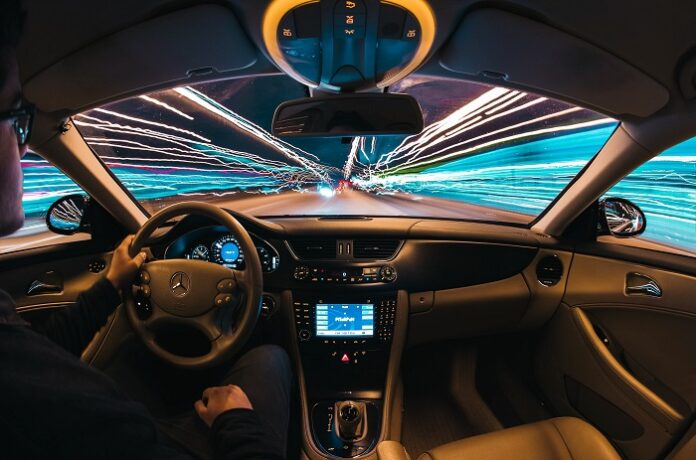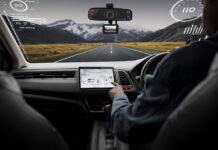As smart cars transition from sci-fi fantasy to driveway reality, they bring features designed to make driving safer and more enjoyable. Yet, with this technological leap forward comes a new concern: cybersecurity. The notion of car hacking, once a far-fetched idea, is now a genuine threat that carries significant risks, not just to individual privacy and safety but to the broader fabric of urban transport.
The cybersecurity risks associated with smart cars are not just theoretical. Hackers gaining access to personal data through connected vehicles is an escalating concern. Moreover, the involvement of data brokers in the trade of sensitive information adds another layer of vulnerability. In the face of a cyberattack or data breach, such information could be misappropriated, leading to serious implications for individuals, ranging from identity theft to more personal threats like stalking.
According to ExpressVPN’s blog piece, the statistics are alarming: 68% of car brands have demonstrated vulnerabilities in their data security practices, as evidenced by recent incidents. Notable breaches include Volkswagen and Audi’s 2021 incident affecting 3.3 million users, Toyota’s decade-long exposure of data affecting 2.15 million users, and Mercedes-Benz’s 2022 leak through a third-party vendor that compromised sensitive data of approximately 1.6 million people. These figures highlight a critical need for strengthened cybersecurity measures in the automotive industry to protect users and maintain the integrity of smart car technologies.
The Connected Car Landscape
Smart cars boast various features like internet connectivity, GPS navigation, and automated driving assistance systems. McKinsey & Company’s analysis suggests that with escalating consumer enthusiasm for autonomous driving capabilities and the current commercial offerings, the market for advanced driver-assistance systems and autonomous vehicles is poised for substantial growth, potentially reaching a market value between $300 billion and $400 billion by 2035. These advancements promise to revolutionize how we drive, but they also present tempting targets for cybercriminals.
Vulnerabilities in Vehicle Systems
The bedrock of smart car functionality is its intricate web of computer systems and sensors, managing everything from navigation to engine performance. Yet, it’s this very sophistication that opens up a Pandora’s Box of cybersecurity threats. With multiple entry points, from Bluetooth to the onboard diagnostics port, smart cars present various opportunities for cyber intrusions.
The case of the Jeep Cherokee controlled remotely by researchers from their laptops is far from an isolated incident. It served as a wake-up call to the automotive industry. The vulnerability exploited in this instance was part of the vehicle’s entertainment system, which was connected to the internet. Once inside, the hackers could send commands through the Jeep’s internal network to its physical components, such as the brakes and engine. The resulting recall involved updating the software in millions of vehicles to prevent such an attack from being possible.
In response, automakers are now racing to reinforce their cybersecurity defenses. They employ intrusion detection systems, which monitor vehicle networks for suspicious activities, and real-time response protocols that can isolate and shut down a cyber-attack’s entry point into a vehicle’s system. There’s a growing emphasis on ‘security by design’—an approach that integrates security features at the earliest stages of vehicle development rather than as an afterthought.
Despite these efforts, challenges remain. Hackers continually evolve their methods, probing for new vulnerabilities, especially as cars become more connected. Autonomous vehicles, for instance, are on the horizon, potentially increasing the risk and impact of cyber-attacks. The need for robust, adaptive cybersecurity measures is clear: as our vehicles become smarter, so must our strategies for protecting them.
Potential Threats and Consequences
Cyber-attacks can take many forms, including, but not limited to, taking over vehicle control systems, stealing personal data, or even hijacking a car’s operational functions. The implications are serious – imagine a hacker disabling cars on a highway or accessing a vehicle’s microphone to eavesdrop on conversations. Such breaches not only threaten personal security but could also cause widespread traffic disruptions or hinder emergency services.
Defensive Measures
Manufacturers are continuously working to strengthen the defenses of smart cars. Security measures like encryption, secure boot mechanisms, and network segmentation are becoming standard. Moreover, companies emphasize the importance of regular software updates, which serve as critical patches for newly discovered vulnerabilities.
The Role of Regulation and Standards
Cybersecurity in the automotive sector is not just a manufacturer’s concern. It’s a regulatory issue. Regulatory bodies in Europe and the United States are beginning to develop frameworks to ensure vehicle cybersecurity is a mandatory part of the design and manufacturing process. Industry standards, too, are evolving, with organizations like the Society of Automotive Engineers (SAE) drafting guidelines for automotive cybersecurity engineering.
Conclusion
Smart cars, an emblem of modern innovation, bring many benefits to drivers worldwide. But with these benefits come risks that we must collectively guard against. The industry, regulators, and consumers must work together to ensure that the vehicles we trust to carry us safely to our destinations are not only smart but also secure. As we embrace the future of automotive technology, let’s ensure that cybersecurity is not left in the rearview mirror.





